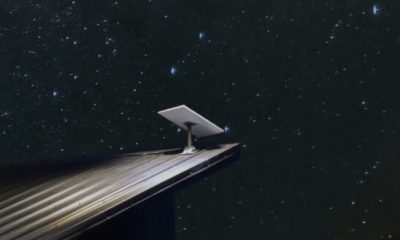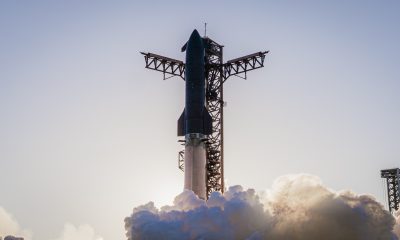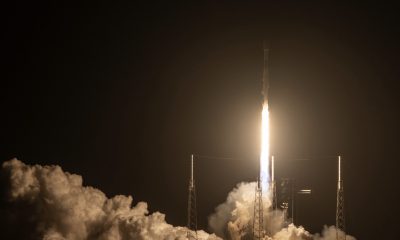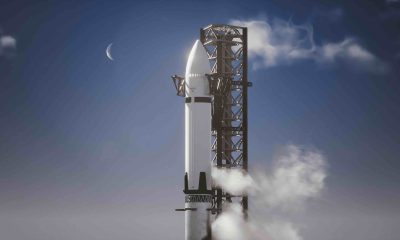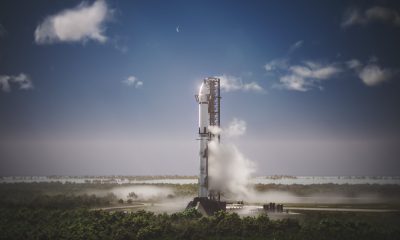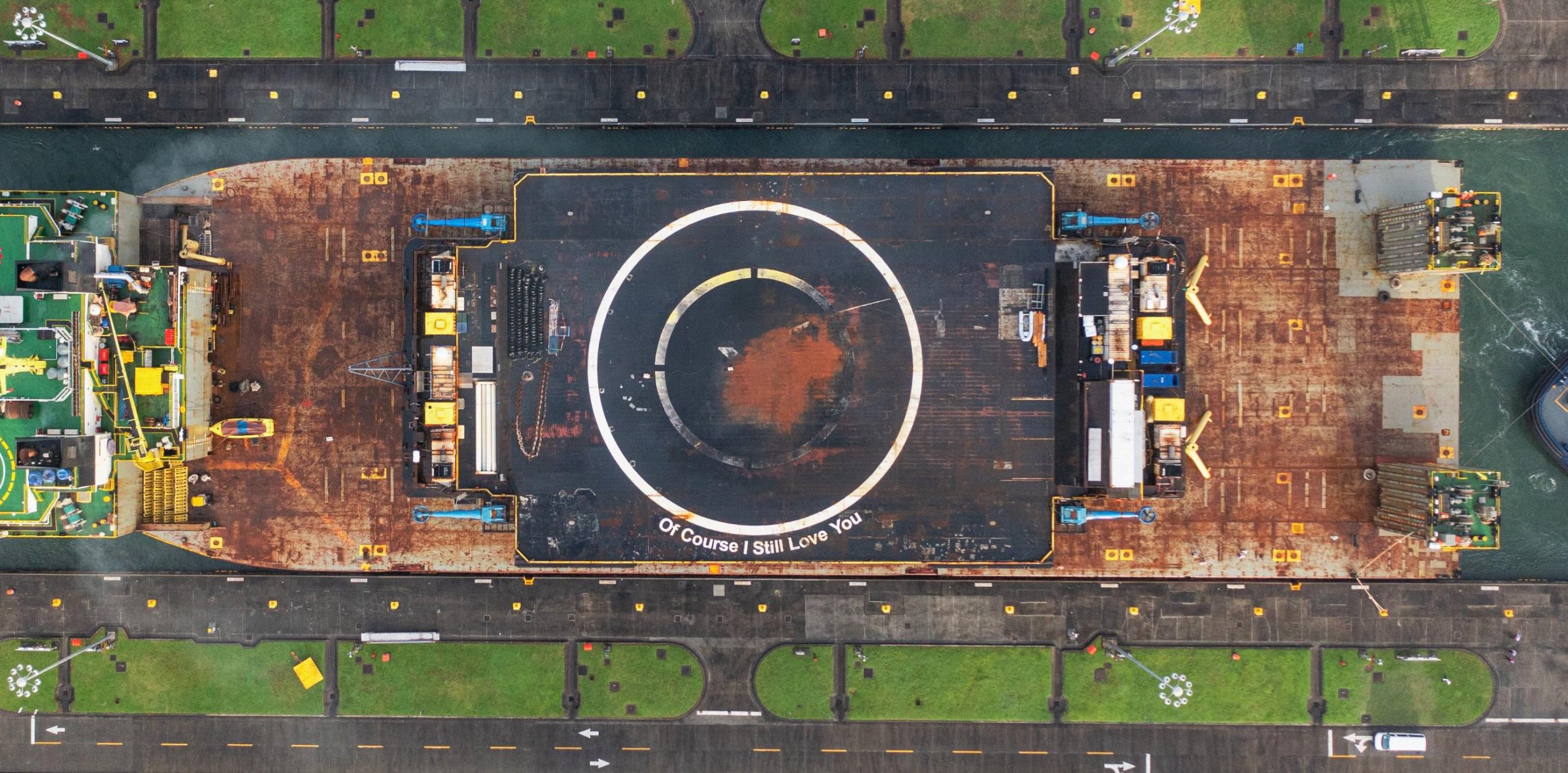

News
SpaceX drone ship completes 5000-mile journey from Florida to California
A bit less than four weeks after departing Central Florida’s Port Canaveral, SpaceX drone ship Of Course I Still Love You (OCISLY) has completed a more than 5000-mile (~8000 km) journey to Port of Long Beach, California.
Around midnight on June 10th, the oldest operational ‘autonomous spaceport drone ship’ (ASDS) was towed out of the closest port to Cape Canaveral, where two SpaceX-leased pads support the vast majority of all Falcon 9 and Falcon Heavy launches. Around 12 months before OCISLY’s departure, drone ship Just Read The Instructions (JRTI) joined it on the East Coast with its first Atlantic Ocean booster recovery some ten months after the opposite journey – California to Florida.
Thanks in no small part to the presence of two operational drone ships stationed in Port Canaveral, SpaceX completed 32 successful East Coast launches and recovered 31 boosters at sea in those 12 months. However, at least as early as April 2021, plans were already in motion to send one of those two drone ships west.
Likely because it’s the most aging member of SpaceX’s booster recovery fleet, drone ship OCISLY was chosen to head to California and support the start of a few dozen dedicated polar Starlink launches. Thanks to limitations with SpaceX’s even older Vandenberg Air/Space Force Base (VAFB) SLC-4E launch facilities, it’s unlikely that the drone ship will ever need support more than one booster recovery per month, compared to two or even three per month operating out of Port Canaveral.
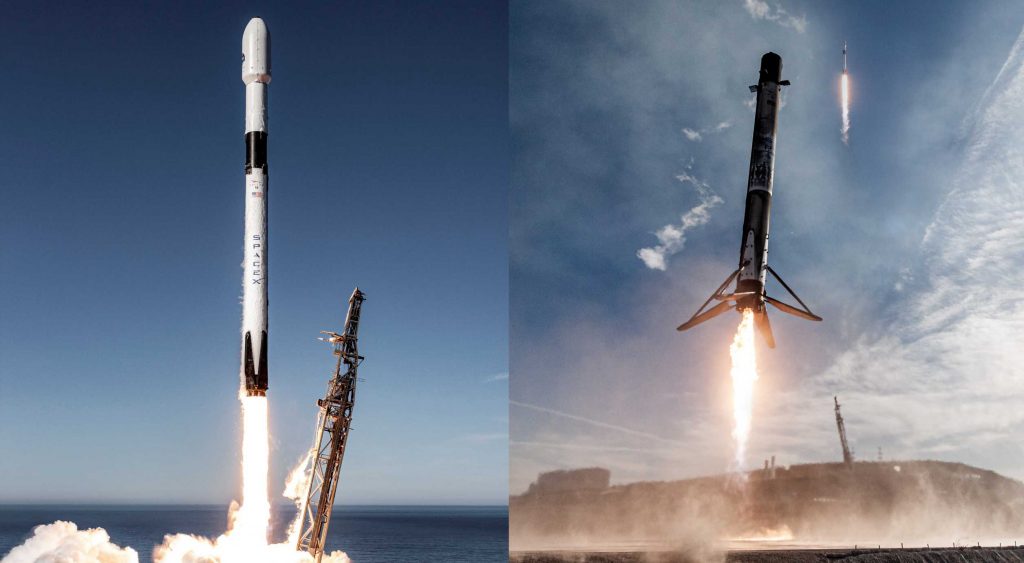
While SpaceX’s East Coast launch operation now has just one drone ship to work with, that might not be the case for long. Late last month, a tugboat frequently used by SpaceX to tow drone ships OCISLY and JRTI departed Port Canaveral and arrived at Port Fourchon, Louisiana on June 27th. Finn Falgout will ultimately tow brand new drone ship A Shortfall of Gravitas (ASOG) – currently in the late stages of assembly at a Fourchon shipyard – to its new home in Port Canaveral, restoring SpaceX’s East Coast booster recovery fleet to two ships.
ASOG’s trip east could happen at any point this month, albeit only after several days to a week of sea trials expected before the shipyard hands off the vessel to SpaceX. At the moment, no East Coast launches of any kind appear to have been scheduled in the first half of July, hinting at unavoidable downtime either for SpaceX alone or the entire Eastern Range. In other words, ASOG could arrive in time to avoid any direct impact on launch cadence that a single drone ship might have.
Still installed on the deck of transport ship Mighty Servant 1 (MS1), OCISLY will likely be offloaded – weather pending – later this week, after which SpaceX will be able to start the process of getting the drone ship ready for its first West Coast rocket recovery mission. That will likely take at least a week or two, potentially leaving OCISLY ready to support SpaceX’s first dedicated polar Starlink launch as early as late July. Simultaneously, it’s not inconceivable that drone ship ASOG will also be ready for its own rocket recovery debut around the same time, meaning that SpaceX could have three operational drone ships for the first time by next month.
Given SpaceX’s plans to quickly ramp up its VAFB facilities to support one launch per month and the impressive success of its East Coast pads in H1 2021, the company could feasibly complete another 21 or 22 launches between August and December.
News
SpaceX successfully launches 100th Starlink mission of 2025
With 100 Starlink missions completed for 2025, space enthusiasts have noted that SpaceX has successfully launched 2,554 Starlink satellites so far this year.
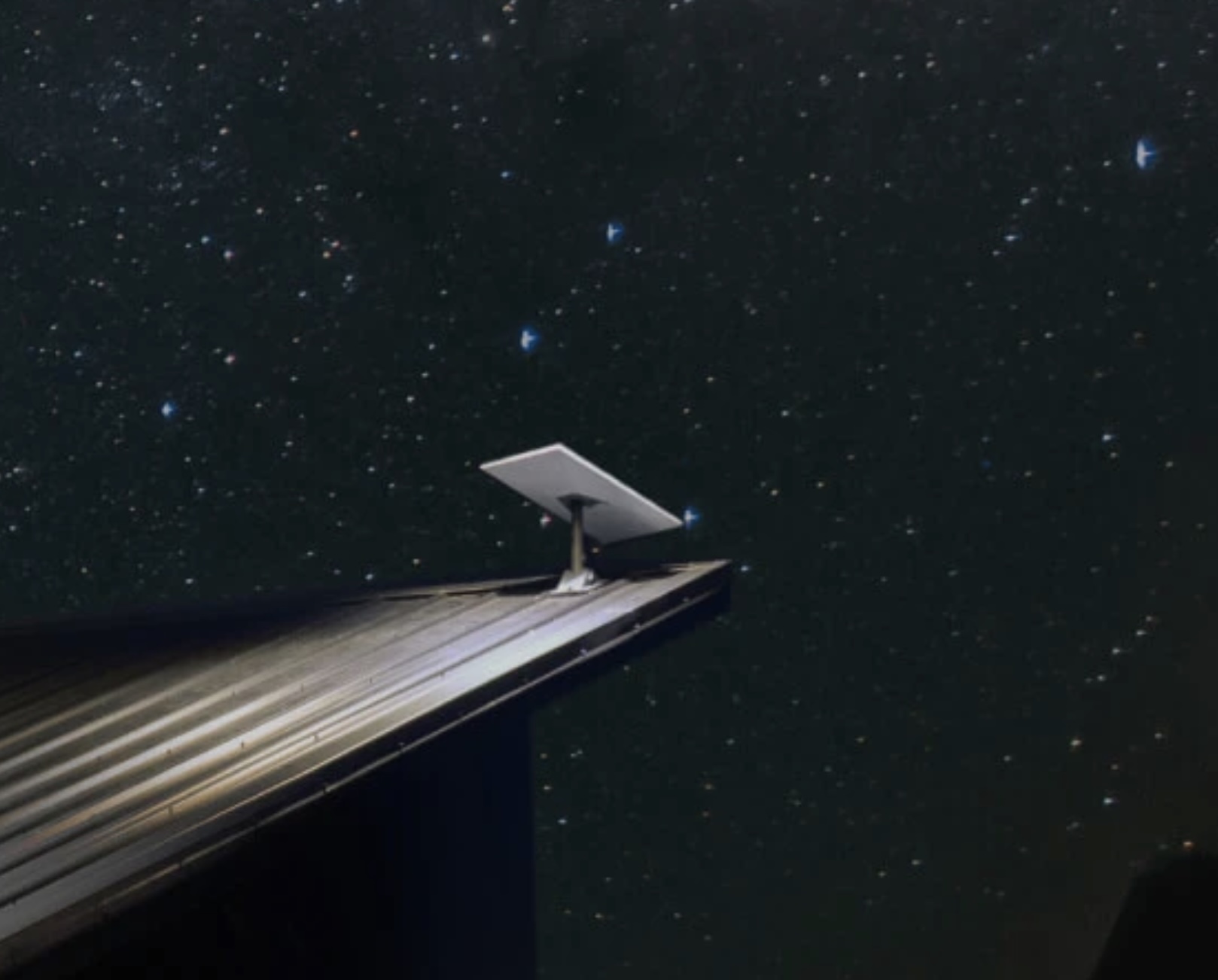
SpaceX achieved its 100th Starlink mission of the year on Friday, October 31, marking another milestone for 2025.
A Falcon 9 rocket carrying 28 Starlink broadband satellites successfully lifted off from Vandenberg Space Force Base in California at 4:41 p.m. ET, carrying another 28 Starlink satellites to Low Earth Orbit (LEO).
Falcon 9 booster’s 29th flight
Roughly 8.5 minutes after liftoff, the Falcon 9’s first stage touched down on the drone ship Of Course I Still Love You in the Pacific Ocean. This marked the booster’s 29th flight, which is approaching SpaceX’s reuse record of 31 missions.
This latest mission adds to SpaceX’s impressive 138 Falcon 9 launches in 2025, 99 of which were dedicated to Starlink, according to Space.com. The company’s focus on reusing boosters has enabled this breakneck pace, with multiple launches each week supporting both Starlink’s expansion and external customers.
Starlink’s network continues massive global expansion
Starlink remains the largest active satellite constellation in history, with more than 10,000 satellites launched, nearly 8,800 of which are currently active. SpaceX recently achieved Starlink’s 10,000-satellite milestone. With 100 Starlink missions completed for 2025, space enthusiasts have noted that SpaceX has successfully launched 2,554 Starlink satellites so far this year.
Starlink, which provides high-speed, low-latency internet connectivity even to the world’s most remote areas, has been proven to be life-changing technology for people across the globe. The service is currently operational in about 150 countries, and it currently has over 5 million subscribers worldwide. From this number, 2.7 million joined over the past year.
News
Tesla shares updated timeframe for Cybertruck FSD V14 release
The Cybertruck was expected to receive FSD V14 before the end of the month, but Tesla was not able to meet the target.
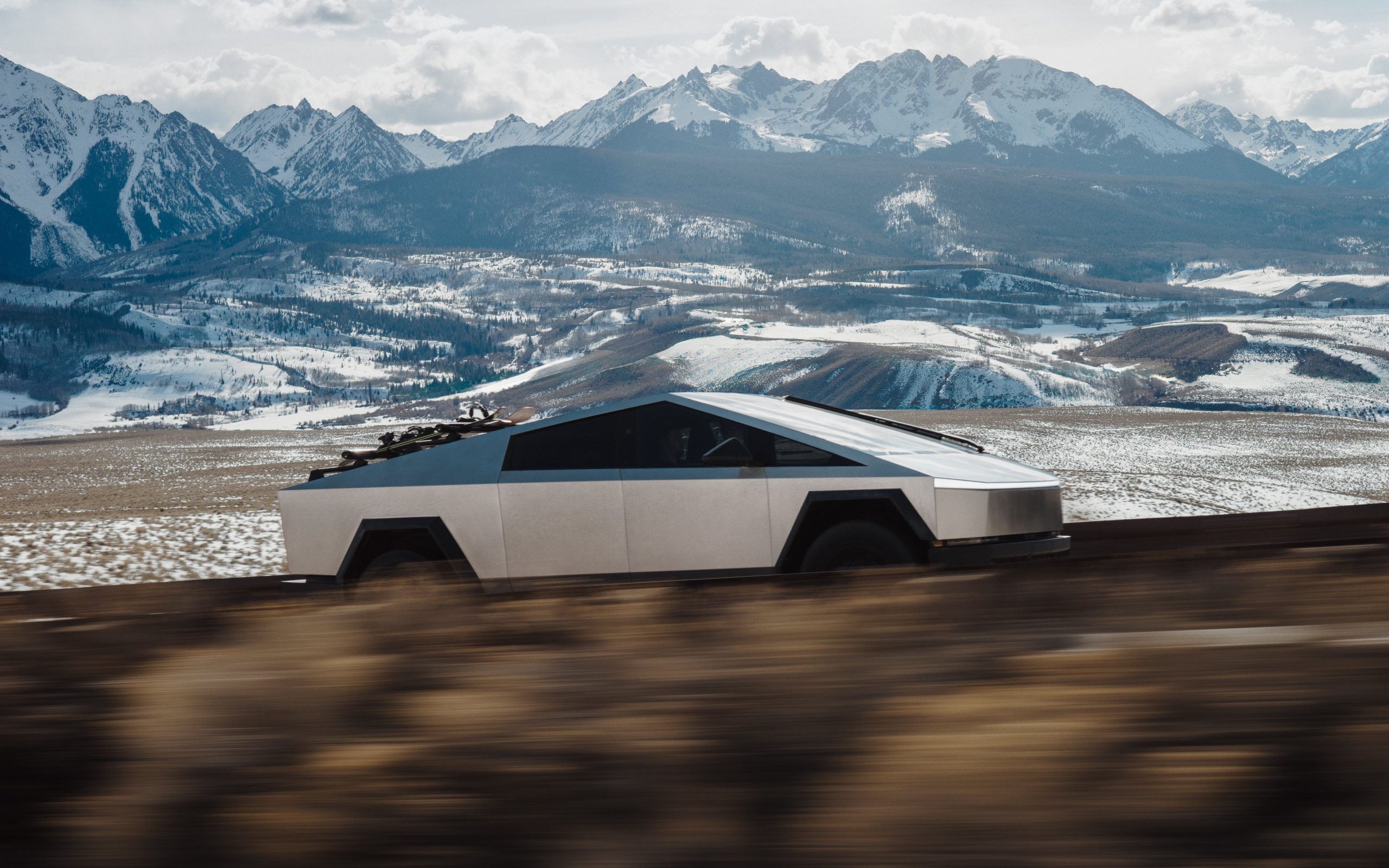
Tesla’s Full Self-Driving (FSD) V14 update for the Cybertruck could arrive this weekend, as per recent comments from Director of Autopilot Software and VP of AI Ashok Elluswamy.
The Cybertruck was expected to receive FSD V14 before the end of the month, but Tesla was not able to meet the target.
Cybertruck FSD V14
Considering the extended wait for FSD V14, it was no surprise that several Cybertruck owners were asking for updates about the system’s rollout to the all-electric pickup truck on Friday. These included the official Cybertruck X account, which responded to Elluswamy’s end of month estimate with “I only see trick. Where is my treat.”
This prompted a response from the AI executive, who replied with, “Sorry, pushing for early access Cyber release over the weekend.” This means that if all goes well, Cybertruck owners would be able to experience FSD V14 very soon. Some, however, are wondering if Tesla would go straight to V14.2 for the Cybertruck’s FSD V14 update, or if the vehicle will receive V14.1 first.
Tesla pushes to unify FSD experience across its lineup
The upcoming Cybertruck rollout represents the next step in Tesla’s efforts to roll out FSD capabilities across all of its vehicles. FSD V14 is a notable step forward for the company’s AI-driven self driving system, with features like Mad Max mode getting positive reviews from longtime Full Self Driving testers.
For the Cybertruck, the FSD V14 update would mark one of its first major over-the-air upgrades for the vehicle. Likely due to its size, the Cybertruck tends to receive FSD updates later than the S3XY lineup, which is quite surprising considering that the all-electric pickup truck is a premium-priced vehicle that is home to some of Tesla’s most advanced technologies.
News
“Tesla Ride” program lets riders experience FSD and Grok AI in real-world demos
The initiative aims to bring supervised Full Self-Driving demos and Grok AI-guided experiences to consumers in real world trips.
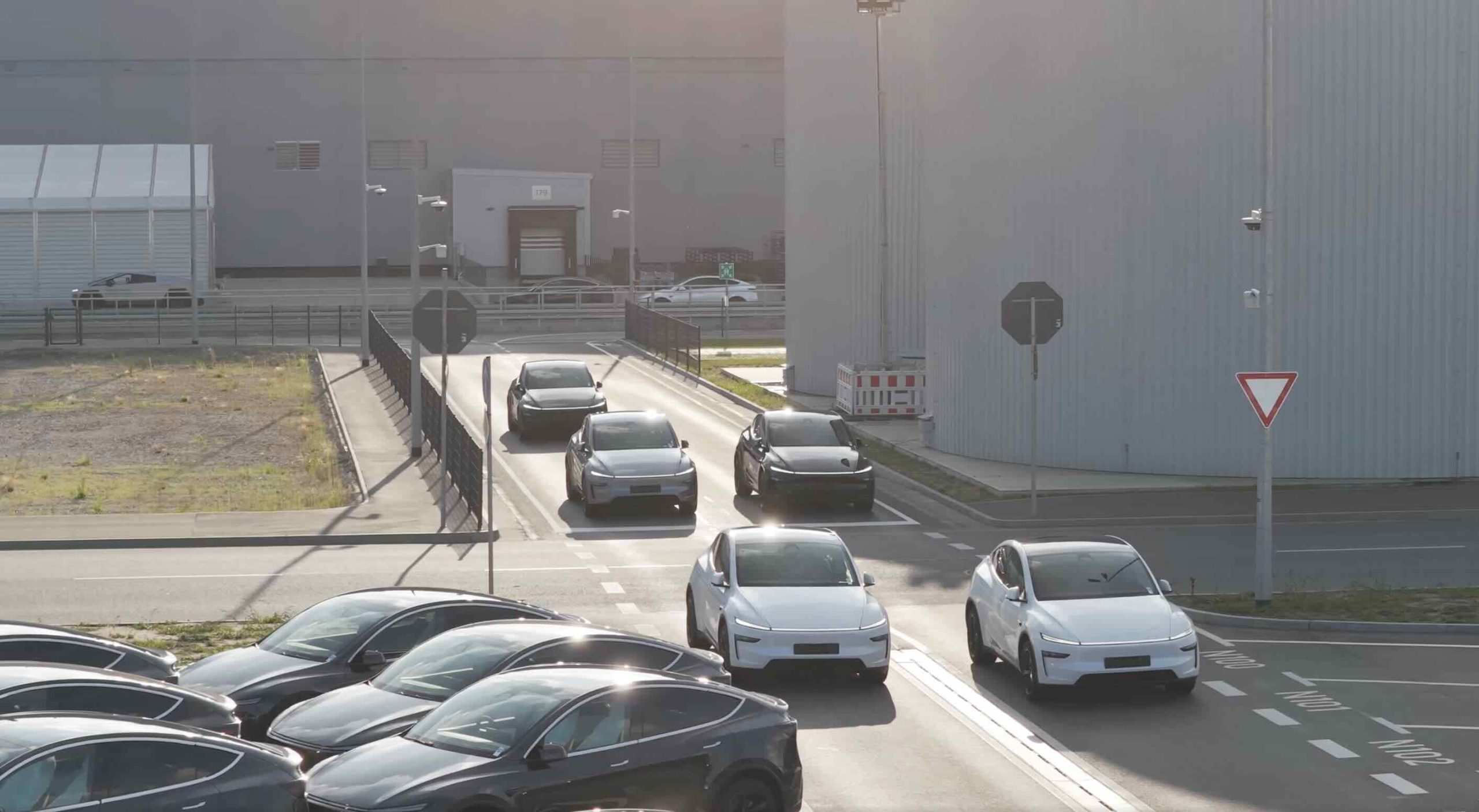
Tesla has launched a new service designed to make its Full Self-Driving (FSD) technology familiar to all commuters.
Dubbed the “Tesla Ride” program, the initiative aims to bring supervised Full Self-Driving demos and Grok AI-guided experiences to consumers in real world trips.
How Tesla Ride Works
As per the official Tesla Ride website, the session will allow participants to sit in the driver’s seat while a Tesla Advisor rides shotgun as co-pilot. The Tesla Advisor then guides riders through the company’s latest supervised FSD features, comfort settings, and in-car entertainment. Participants would also be able to interact with Grok AI in the vehicles. Grok will be capable of answering questions during the ride, and it will even tell stories along the way.
Tesla noted, however, that Tesla Ride sessions are capped at 45 minutes each, and it requires participants to have a valid driver’s license and insurance. Interested participants are also advised to call beforehand so they can schedule their Tesla Rides.
Marketing push and reach
The Tesla Ride program runs across several markets from October into November, and in some locations into the end of December 2025. Participating states are numerous, from Michigan to Virginia to Illiois, Nevada, and California, among others. A look at the official webpage for Tesla Ride shows that the company is still taking a very cautious approach with the program, with disclaimers clearly stating that FSD Supervised does not make Teslas autonomous just yet.
Tesla’s focus on safety with FSD was highlighted recently by Senior Vice President for Automotive Tom Zhu. “Elon said it in 2021: “For self-driving, even if the road is painted completely wrong and a UFO lands in the middle of the road, the car still cannot crash and still needs to do the right thing.
“The prime directive for the autopilot system is: Don’t crash. That really overrides everything. No matter what the lines say or how the road is done, the thing that needs to happen is minimizing the probability of impact while getting you to your destination conveniently and comfortably,” the executive stated.
-
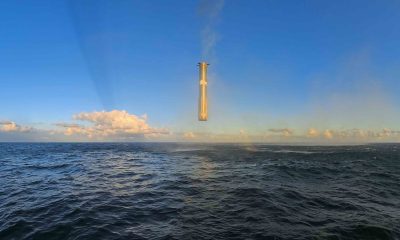
 Elon Musk2 weeks ago
Elon Musk2 weeks agoSpaceX posts Starship booster feat that’s so nutty, it doesn’t even look real
-

 Elon Musk2 weeks ago
Elon Musk2 weeks agoTesla Full Self-Driving gets an offer to be insured for ‘almost free’
-
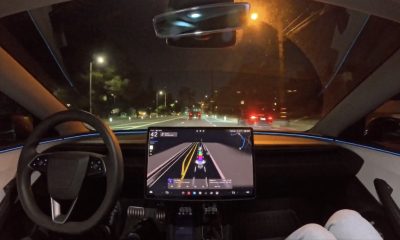
 News2 weeks ago
News2 weeks agoElon Musk confirms Tesla FSD V14.2 will see widespread rollout
-

 News2 weeks ago
News2 weeks agoTesla is adding an interesting feature to its centerscreen in a coming update
-
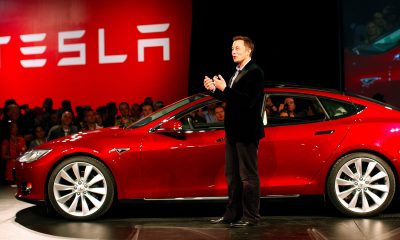
 Elon Musk2 weeks ago
Elon Musk2 weeks agoTesla CEO Elon Musk’s $1 trillion pay package hits first adversity from proxy firm
-

 News2 weeks ago
News2 weeks agoTesla might be doing away with a long-included feature with its vehicles
-
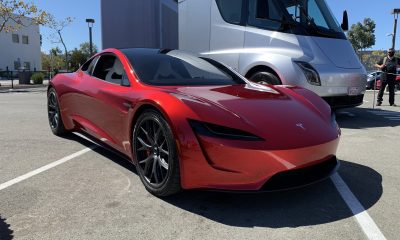
 News2 weeks ago
News2 weeks agoTesla updates fans on its plans for the Roadster
-
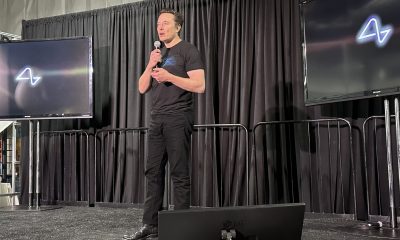
 Elon Musk2 weeks ago
Elon Musk2 weeks agoAfter moving Tesla to Texas, Elon Musk is back in the Bay Area with Neuralink expansion


